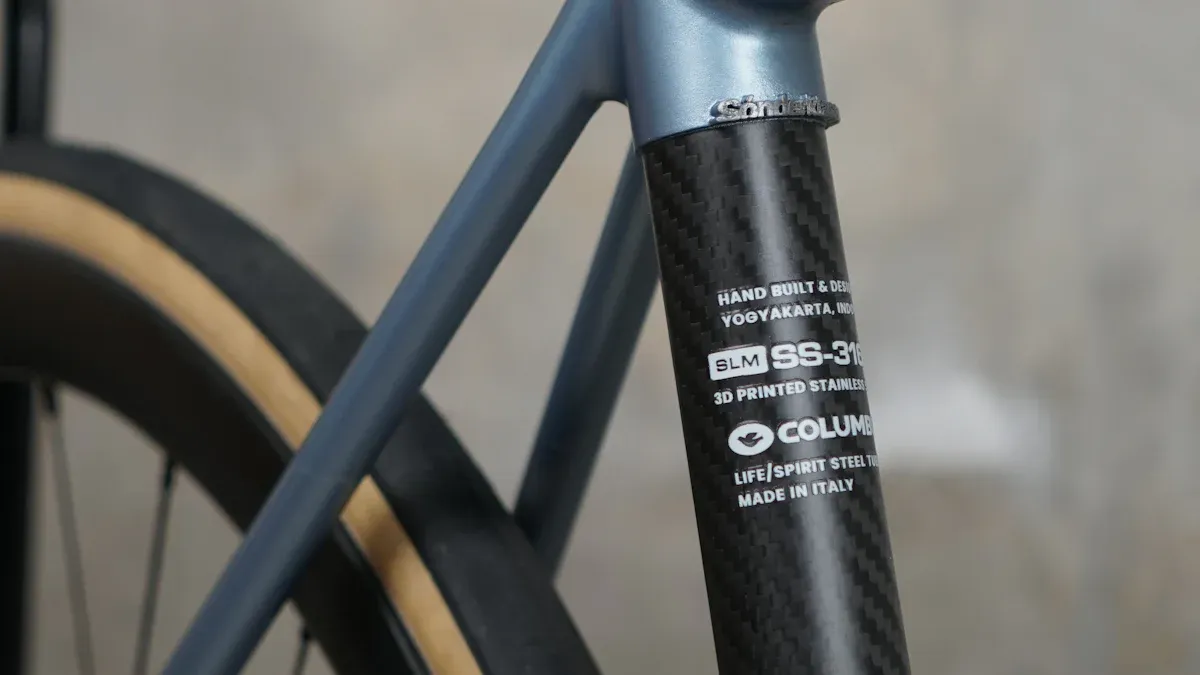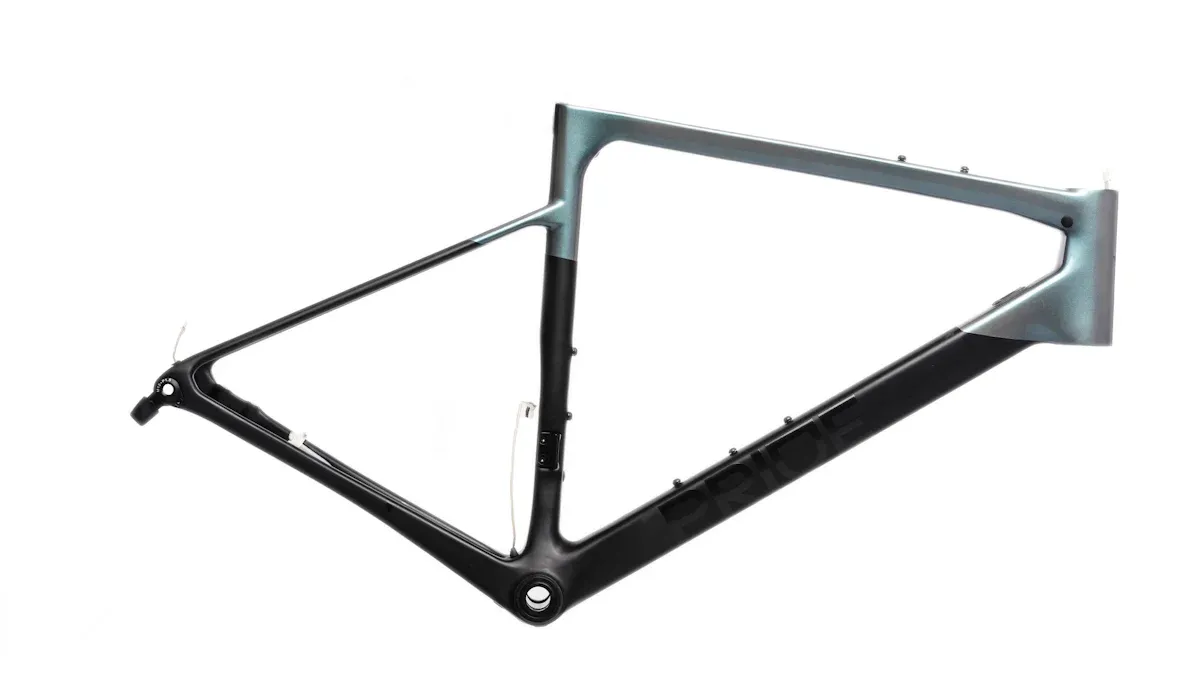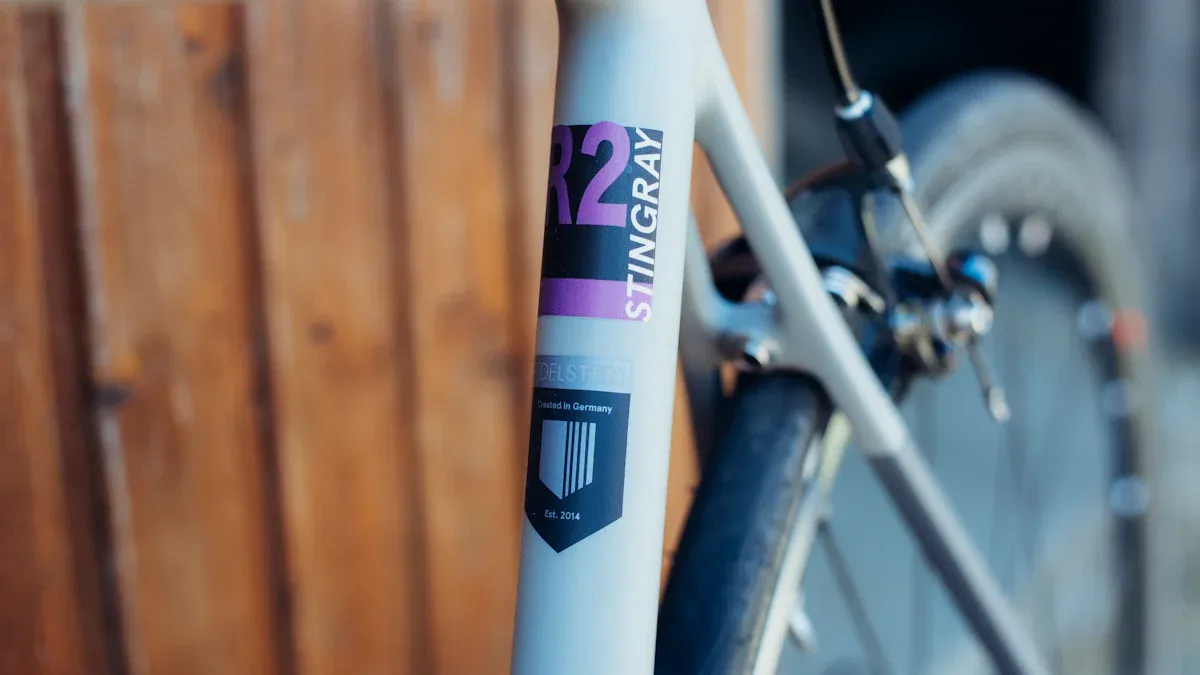
Choosing the right bike frame is very important. It affects how well you perform and how comfortable you feel while riding. Many cyclists want better choices. Because of this, carbon alloy bike frames are becoming very popular. The market for these bike frames is expected to grow a lot. It could reach about $850 million by 2025. This shows that many people want bikes that are light and strong. Now, let’s look at some of the best models that can improve your cycling experience.
Key Takeaways
Carbon alloy bike frames are tough and long-lasting. They are a smart choice for serious cyclists.
These frames weigh much less than aluminum. This helps with performance, especially when climbing hills.
Carbon frames soak up bumps better. This gives you a smoother and more comfy ride on long trips.
Think about how you ride and your budget when picking a bike frame. This helps make sure it fits your needs.
Taking care of carbon alloy bike frames can make them last longer. This keeps them in great shape.
Benefits of Carbon Alloy Bike Frames

When you pick a carbon alloy bike frame, you get strength and durability. This can really improve your cycling experience.
Strength and Durability
Carbon alloy materials are strong and light. This means you have a frame that can handle cycling well without being heavy. In perfect conditions, these frames can last a very long time. But remember, they can crack if hit hard, which can cause serious problems. If you take care of it, a carbon alloy bike frame can last for many years. This makes it a good choice for serious cyclists.
Key Points:
They can last a long time in ideal conditions.
They might break if hit hard.
They are a good investment with proper care.
Weight Advantages
One great thing about carbon alloy bike frames is that they are very light. Compared to regular aluminum frames, carbon fiber frames can be much lighter—often by a pound or more. This lighter weight can help you perform better, especially when climbing hills or riding for a long time.
Weight Comparison:
Carbon fiber frames are lighter than aluminum frames.
You can lose up to a pound or more when comparing similar frames.
Vibration Damping
Another big plus of carbon alloy bike frames is that they can absorb vibrations. This makes your ride smoother and more comfortable. Studies show that carbon fiber can absorb vibrations up to 30% better than aluminum. This means you will feel less tired during long rides, helping you keep your speed and energy.
Material | Vibration Absorption Capability |
|---|---|
Carbon Fiber | Up to 30% more than aluminum |
Aluminum Alloy | Baseline for comparison |
Overall, carbon alloy frames are great for cycling. They are lighter, which helps with speed and climbing. Plus, they reduce vibrations, making your ride smoother and less tiring on long trips.
Performance Metrics:
Carbon frames weigh about 770 grams, while alloy frames can weigh up to 1800 grams.
Carbon frames help you climb better by 7-10% compared to alloy frames.
Best Carbon Road Bikes
If you want to find the best carbon road bikes in 2025, you have great choices. Each bike has special features for different riding styles and needs. Let’s look at some of the best options.
Specialized Tarmac SL8
Specifications
Frame Weight: 685 grams for a 56 cm frame
Tire Clearance: 32mm
Stiffness-to-Weight Ratio: Improved by over 30%
Pros and Cons
Pros:
Great balance of weight and stiffness.
Proven design from world championship races.
Cons:
Higher price than some other bikes.
Limited tire space may not fit wider tires.
Unique Features
The Tarmac SL8 is known for its aerodynamics. It has a stiffness-to-weight boost of 33% compared to the SL7. This bike is great for climbing and sprinting, making it popular with serious racers.
Canyon Endurace
Specifications
Frame Weight: About 900 grams
Tire Clearance: Up to 35mm
Seatpost: S15 VCLS 2.0 with 20mm vertical deflection
Pros and Cons
Pros:
Very comfortable for long rides.
Better aerodynamics with a new design.
Hidden cables for a clean look.
Cons:
A bit heavier than some other bikes.
Might not be as quick as race-focused bikes.
Unique Features
The Canyon Endurace has an aero cockpit and a thinner down tube, making it 7 Watts faster than older models. It focuses on comfort, perfect for endurance rides.
Cervélo R5 Disc
Specifications
Frame Weight: Under 1000 grams
Tire Clearance: Fits tires up to 28mm
Brakes: Hydraulic disc brakes with flat mount design
Pros and Cons
Pros:
Very stiff frame for good power transfer.
Hidden cables for better aerodynamics.
Cons:
Not as smooth on rough roads as some others.
Less comfortable on bumpy surfaces.
Unique Features
The Cervélo R5 Disc has a SquovalMax tubeset that improves aerodynamics and stiffness. While it handles well, some riders find it less forgiving on rough roads.
Trek Émonda SLR
Specifications
Frame Weight: 698 grams for a medium frame
Material: 800 Series OCLV Carbon
Tire Clearance: 28mm
Pros and Cons
Pros:
Better stiffness for quick response.
Perfect for serious racers.
Cons:
Price might be too high for some cyclists.
Limited tire space compared to other bikes.
Unique Features
The Trek Émonda SLR uses special 800 Series OCLV Carbon, which is 30% stronger than older models. This bike is made for climbing and sprinting, making it a top pick for competitive cyclists.
Caledonia 5
Specifications
Frame Weight: About 950 grams
Tire Clearance: Up to 36mm
Storage: In-frame storage for essentials
Pros and Cons
Pros:
Flexible design for different terrains.
Built-in storage for convenience.
Cons:
Heavier than some race-focused bikes.
May not be as quick as sportier models.
Unique Features
The Caledonia 5 is made for comfort and stability, great for long rides. Its dropped seat stays and D-shaped seatpost help reduce vibrations, improving ride quality.
Testing and Performance Evaluation

When you buy a carbon alloy bike frame, you want to make sure it is safe and works well. Here’s what you need to know about testing and evaluation.
Industry Standards
Manufacturers follow strict rules to make sure their bike frames are safe and strong. Here are some important international standards:
UCI Certification: This certification checks bikes used in races. It focuses on safety and how well they resist pressure without changing shape.
EFBE Certification: This is known for tough testing. EFBE does extreme tests, fatigue tests, and stationary tests to ensure high safety and strength.
ISO 4210: This standard sets minimum levels for strength, durability, and resistance to wear in bikes and parts.
These standards help you trust that your bike can handle serious cycling.
Real-World Testing
Real-world testing is important to see how carbon alloy bike frames work in different conditions. For example, carbon fiber frames don’t rust but can break down under UV light, so protective coatings are needed. Aluminum frames resist rust but can corrode at connection points. This can affect how long your bike lasts in different weather.
Many cyclists like modern aluminum frames for long rides. This suggests that choosing between carbon and alloy may depend on your budget and riding style. For example, the Synapse Carbon is made to absorb bumps well, making it a good choice for endurance riders on rough paths.
User Reviews
User feedback is very important for checking bike frames. Cyclists often share their thoughts on ride quality, comfort, and performance. Many riders like how light carbon frames are, which helps with speed and climbing. However, some may prefer the sturdiness of aluminum frames for daily use.
Understanding these opinions can help you make a smart choice. Look for reviews that talk about durability, ride quality, and the price-to-performance ratio. This way, you can pick a bike frame that meets your needs and improves your cycling experience.
In conclusion, carbon alloy bike frames have many benefits that serious cyclists should think about. Here are some important points:
Weight: Carbon frames are very light. This makes them great for racing and climbing.
Durability: Carbon frames work well, but they can break easily. Alloy frames are easier to fix and last longer.
Comfort: Carbon frames are good at reducing vibrations. This makes your ride more comfortable on bumpy trails.
When picking a bike, consider what you need. Are you racing, commuting, or going on long rides? Your budget matters too. Usually, bikes under $1,500 have aluminum frames. If you spend more, you can find good carbon options.
Buying a good carbon alloy bike frame can really improve your cycling experience. So, think about your choices carefully and pick the frame that matches your style and goals!
FAQ
What is the durability of carbon alloy bike frames?
Carbon alloy bike frames are strong. They can last many years if you take care of them. But, they might crack if hit hard. Regular maintenance helps them last longer.
How do carbon alloy frames compare to aluminum mountain bikes?
Carbon alloy frames are lighter. They also absorb vibrations better than aluminum mountain bikes. This makes them great for performance bikes, especially on long rides or climbs.
What is the best budget carbon bike option?
If you want a good budget carbon bike, check out models like the Caledonia 5. It gives you comfort and performance without costing too much.
Are carbon frames suitable for endurance riding?
Yes! The best carbon endurance bikes, like the Canyon Endurace, offer comfort and stability for long rides. They help reduce tiredness, making them great for endurance cyclists.
Can I use a carbon bike for all-road riding?
Absolutely! The best carbon all-road bikes, such as the Caledonia 5, are made for versatility. They can handle different terrains while giving you a smooth ride.
See Also
The Advantages of Carbon Bike Frames for Cyclists in 2025
A Guide to Evaluating Carbon Race Bike Frames for Performance
Selecting the Perfect Carbon Mountain Bike Frame for All Riders
Understanding What Makes Titanium Bike Frames Unique and Superior
Exploring the Innovations in Carbon Fiber Bike Frame Technology
